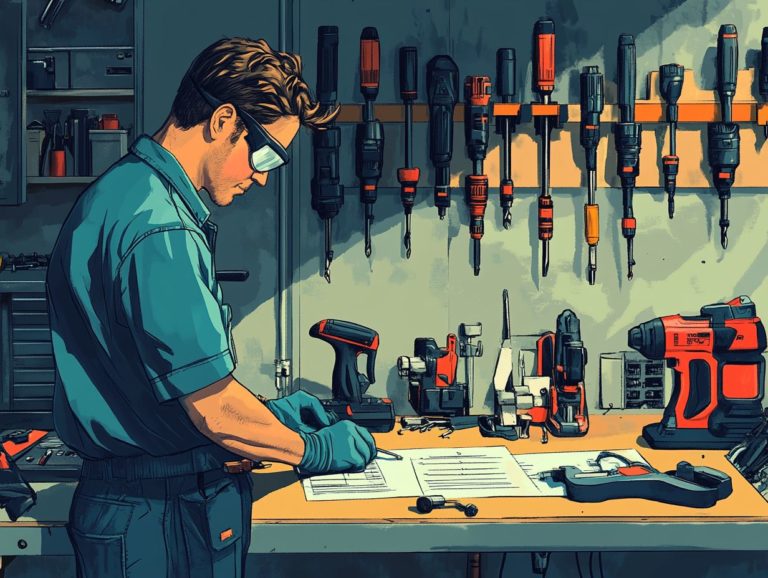The Best Practices for Equipment Maintenance
Effective equipment maintenance is essential for smooth operations. It also extends the lifespan of your machinery. Let s explore why maintenance matters and the types you should consider, including preventive, corrective, predictive, and routine maintenance.
Establishing a maintenance schedule and training employees on proper use can greatly enhance efficiency. This approach minimizes downtime and boosts safety. Embracing a proactive approach to equipment care offers transformative benefits that can elevate your operations to new heights.
Contents
- Key Takeaways:
- Why is Equipment Maintenance Important?
- What are the Different Types of Equipment Maintenance?
- What are the Best Practices for Equipment Maintenance?
- What are the Benefits of Proper Equipment Maintenance?
- Frequently Asked Questions About Equipment Maintenance
- What are the best maintenance practices for equipment maintenance?
- Why is a maintenance schedule important?
- How should equipment items be stored to ensure their longevity?
- Why is it important to follow the manufacturer’s guidelines for equipment maintenance?
- What should be included in detailed repair records?
- How can regular equipment servicing and maintenance benefit a business?
Key Takeaways:
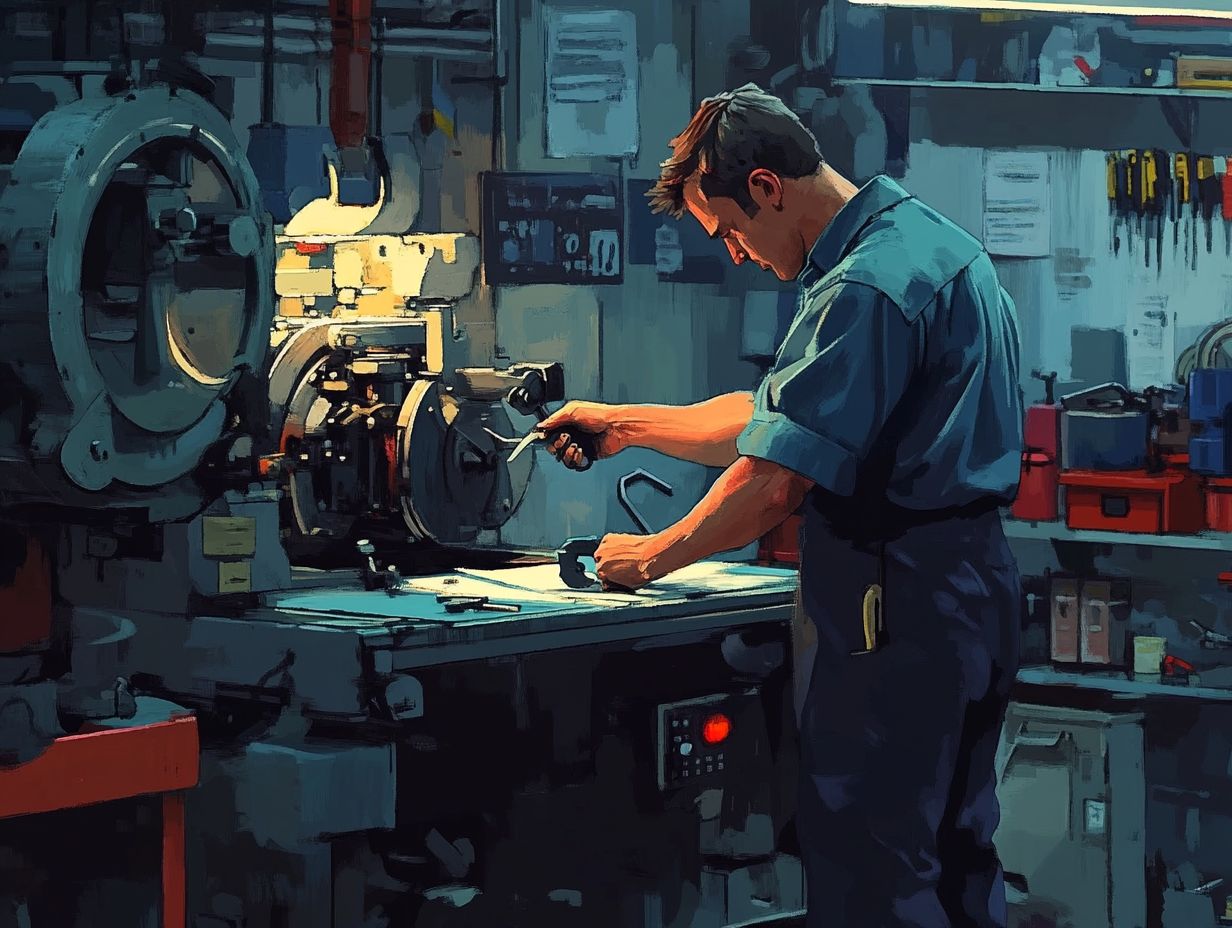
- Regular maintenance can greatly increase equipment lifespan and efficiency.
- Preventive, corrective, and predictive maintenance help keep your equipment running smoothly and reduce costs.
- The benefits of proper maintenance include increased safety and improved efficiency, making it essential for all businesses.
Why is Equipment Maintenance Important?
Equipment maintenance is vital for keeping machinery running well across industries. Good practices reduce downtime and boost performance. This proactive approach mitigates the risk of unexpected breakdowns and maximizes your maintenance budget.
Implementing preventive maintenance strategies allows you to identify potential issues before they escalate, ensuring that your equipment runs smoothly and efficiently. A solid equipment maintenance plan becomes the foundation of effective asset management, resulting in improved productivity and lower long-term costs.
What are the Different Types of Equipment Maintenance?
Understanding equipment maintenance types helps in creating a solid strategy. The key categories include:
- Preventive maintenance, which emphasizes regular inspections and maintenance tasks designed to prevent equipment failures;
- Corrective maintenance, which tackles issues once they arise;
- Predictive maintenance, using data to predict when equipment might fail before it occurs;
- Routine maintenance, which involves daily checks and servicing tasks to ensure your equipment operates at peak performance.
1. Preventive Maintenance
Preventive maintenance involves scheduled tasks to prevent failures. This strategy is key to keeping your operations running smoothly. By developing a comprehensive maintenance schedule, you can systematically identify and prioritize critical tasks that need regular attention.
Tailoring specific maintenance activities to each piece of equipment ensures that all necessary actions are executed punctually. Leveraging advanced maintenance software enables you to track activities, document inspections, and analyze performance trends effectively.
Regular inspections and the implementation of strategic maintenance measures can notably extend the longevity of your equipment, ultimately boosting overall productivity and reducing long-term costs.
2. Corrective Maintenance
Corrective maintenance involves fixing equipment only after a breakdown, which often leads to frustrating downtime and unexpected maintenance requests. This process typically begins with a detailed inspection to evaluate the malfunction’s extent and identify necessary repairs to restore functionality.
Keeping meticulous repair records is essential during this phase; this practice helps track historical issues and aids in forecasting future breakdowns. Relying solely on reactive maintenance can have serious consequences, often resulting in increased operational inefficiency and higher costs due to unplanned downtime. Such interruptions can disrupt workflow and impact overall productivity, while frequent breakdowns may require more extensive repairs later, further escalating expenses and potentially affecting service delivery.
3. Predictive Maintenance
Predictive maintenance empowers you to leverage data analysis and equipment tracking systems to foresee when maintenance should be conducted. This approach optimizes your equipment s performance and minimizes downtime.
This innovative strategy employs advanced techniques like condition monitoring, which involves regularly checking the health of equipment through key parameters such as vibration, temperature, and pressure. By harnessing sophisticated data analytics, you can identify patterns and anticipate failures before they occur, allowing you to proactively address potential issues.
Implementing predictive maintenance enhances the operational efficiency of your machinery, significantly extends equipment lifespan, and lowers overall maintenance costs. By adopting this method, you can align maintenance schedules more intelligently, leading to improved resource management and seamless productivity.
4. Routine Maintenance
Routine maintenance involves regular servicing and upkeep tasks to ensure your equipment operates effectively daily. This includes conducting thorough inspections and adhering to a detailed maintenance checklist.
Being proactive can help you catch issues early and keep your equipment running smoothly! Tasks like lubricating moving parts, checking fluid levels, and tightening bolts should be performed according to the manufacturer’s guidelines, typically recommending intervals ranging from weekly to monthly.
Carrying out periodic inspections of critical components such as electrical systems and hydraulic lines greatly enhances the longevity of your machinery. Embracing these routine practices extends the life of your equipment and optimizes operational efficiency, ultimately leading to reduced downtime and cost savings.
What are the Best Practices for Equipment Maintenance?
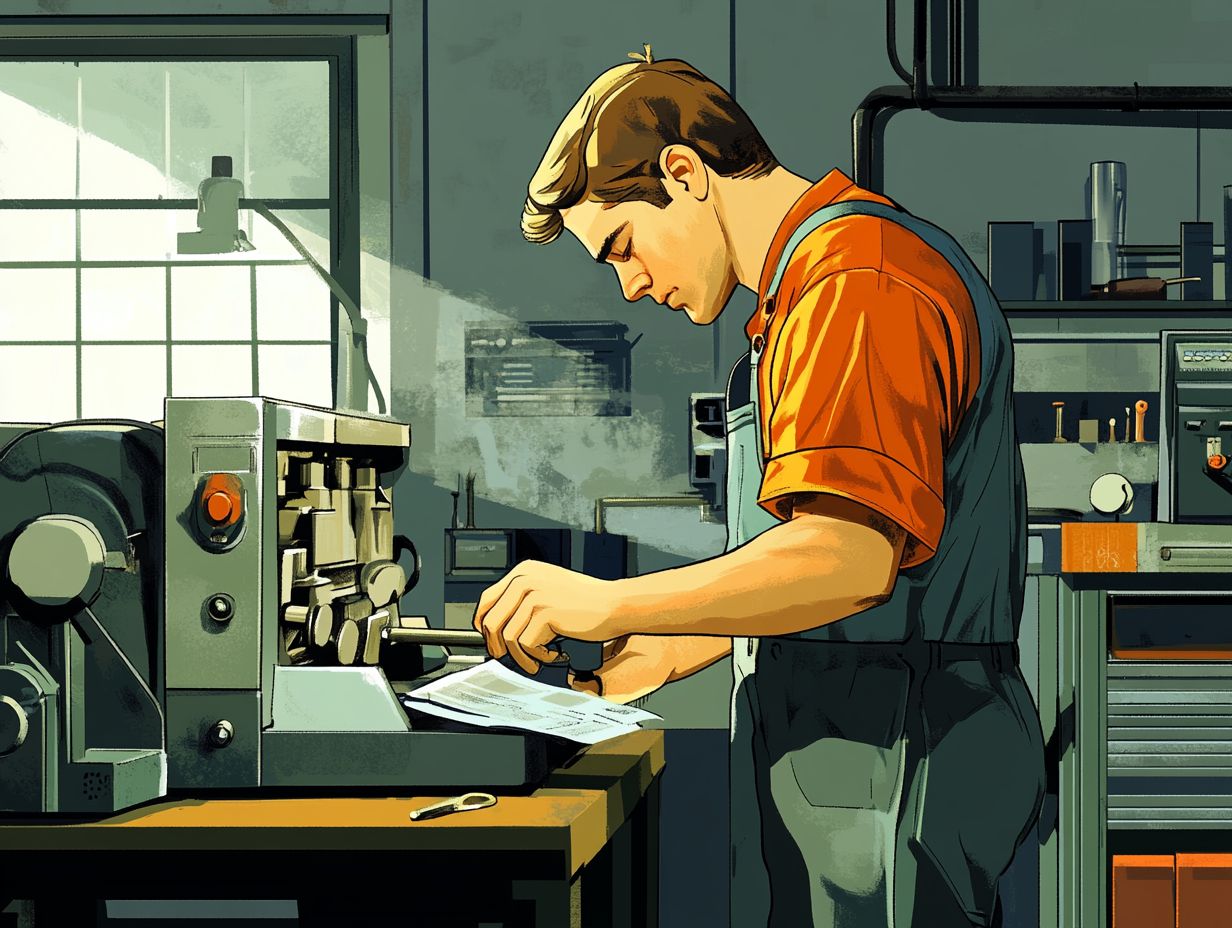
Implementing best practices for equipment maintenance is crucial for ensuring longevity and operational efficiency. Focus on developing a comprehensive maintenance schedule that outlines all necessary tasks.
Regular inspections and equipment inspections are vital; they allow you to catch potential issues before they escalate. Keeping a maintenance log will help you track equipment performance and history, giving you valuable insights over time.
Setting up maintenance reminders ensures that tasks are completed promptly, fostering a proactive maintenance strategy that keeps everything running smoothly. Start taking control of your equipment maintenance today for a smoother and more efficient operation!
1. Create a Maintenance Schedule
Kick off your equipment maintenance strategy with a solid maintenance schedule! This crucial step allows you to implement preventive maintenance effectively by clearly outlining specific tasks and timelines.
This structured approach minimizes unexpected downtime and extends the life of your valuable assets. Begin by assessing how frequently your equipment is used; more intensive usage might require more regular checks.
Once you have this analysis in place, identify specific maintenance tasks think inspections, cleaning, and parts replacement and assign realistic timeframes for their completion. Utilizing maintenance software can significantly enhance this planning process by automating reminders, tracking compliance, and centralizing records.
By embracing such technology, you ensure that everyone adheres to the schedule, significantly reducing the chance of costly equipment repairs.
2. Conduct Regular Inspections
Regular inspections are crucial don t wait until problems escalate! They allow you to catch potential issues early on before they lead to significant downtime or costly repairs.
By systematically assessing various components like machinery, safety systems, and electrical setups you ensure that everything operates smoothly. These inspections can range from routine checks to more comprehensive assessments, including maintenance checks that predict future issues.
Pay close attention to critical areas like lubrication systems, wear and tear on parts, and overall safety compliance. Doing so not only extends the life of your machinery but also strengthens your entire maintenance strategy.
When executed effectively, these inspections enhance your operational efficiency by reducing unexpected equipment failures and streamlining workflows, ultimately fostering a more productive environment.
3. Keep a Maintenance Log
Maintaining a comprehensive log is crucial for documenting maintenance records, tracking equipment performance, and ensuring that all tasks are scheduled and executed efficiently. Utilizing maintenance software can streamline these processes and provide valuable insights.
An effective maintenance log becomes your trusted ally, not just for recording completed work but also for planning future tasks. Each entry should capture essential information such as dates, descriptions of work performed, parts utilized, and any anomalies observed.
This vital information empowers you to identify patterns or recurring issues, enabling you to implement proactive strategies that boost operational efficiency. By keeping precise records, you not only ensure compliance with industry standards and regulations but also cultivate a culture of reliability and accountability within your teams.
4. Train Employees on Proper Equipment Use and Maintenance
Training your employees on proper equipment use and maintenance is essential for ensuring both safety and efficiency. Well-trained equipment operators can greatly minimize the chances of equipment damage and the need for costly repairs.
Effective training sessions should cover a thorough curriculum that updates participants on the latest safety protocols and equipment handling techniques. The frequency of these sessions is crucial; regular reinforcement of knowledge and skills gives the power to employees to operate machinery safely.
Incorporating hands-on training allows employees to gain practical experience. This enables them to identify potential hazards and implement preventive measures effectively. A robust training program cultivates a culture of safety and enhances overall maintenance practices.
This, in turn, leads to prolonged equipment longevity and improved operational success.
5. Use Quality Replacement Parts
Using high-quality replacement parts during equipment servicing is crucial for ensuring optimal performance and reducing long-term maintenance costs.
When you equip your machinery with subpar components, you risk diminished efficiency and increase the chances of frequent breakdowns. This can lead to costly repairs and extended equipment downtime. Inferior parts may fail to fit properly or operate effectively, compromising overall safety.
To keep your equipment running smoothly, seek parts from reputable manufacturers or authorized dealers. Pay close attention to product warranties and customer reviews these can be invaluable maintenance resources. Additionally, verifying certification marks can assure you of quality for your equipment.
By prioritizing quality over mere cost savings, you can significantly enhance the longevity and reliability of your equipment.
6. Clean and Lubricate Equipment Regularly
Regularly cleaning and lubricating your equipment is not just a routine task; it s a vital maintenance practice that enhances the health and longevity of your machinery. It also prevents contaminants from accumulating and leading to costly failures.
You can ensure your equipment operates at peak performance by using the right cleaning agents and lubricants. Opting for biodegradable cleaning products effectively tackles grime while remaining gentle on the environment. Make your lubricant selections based on your machinery s specific needs; some may require synthetic oils man-made lubricants while others may perform better with greases, which are thicker substances used to reduce friction.
Establishing regular intervals for these maintenance tasks is crucial. Typically, a monthly check-up is recommended for most equipment to keep everything running smoothly. By integrating these cleaning and lubrication routines into a full maintenance plan, you safeguard your investment and significantly extend its lifecycle and health.
7. Store Equipment Properly
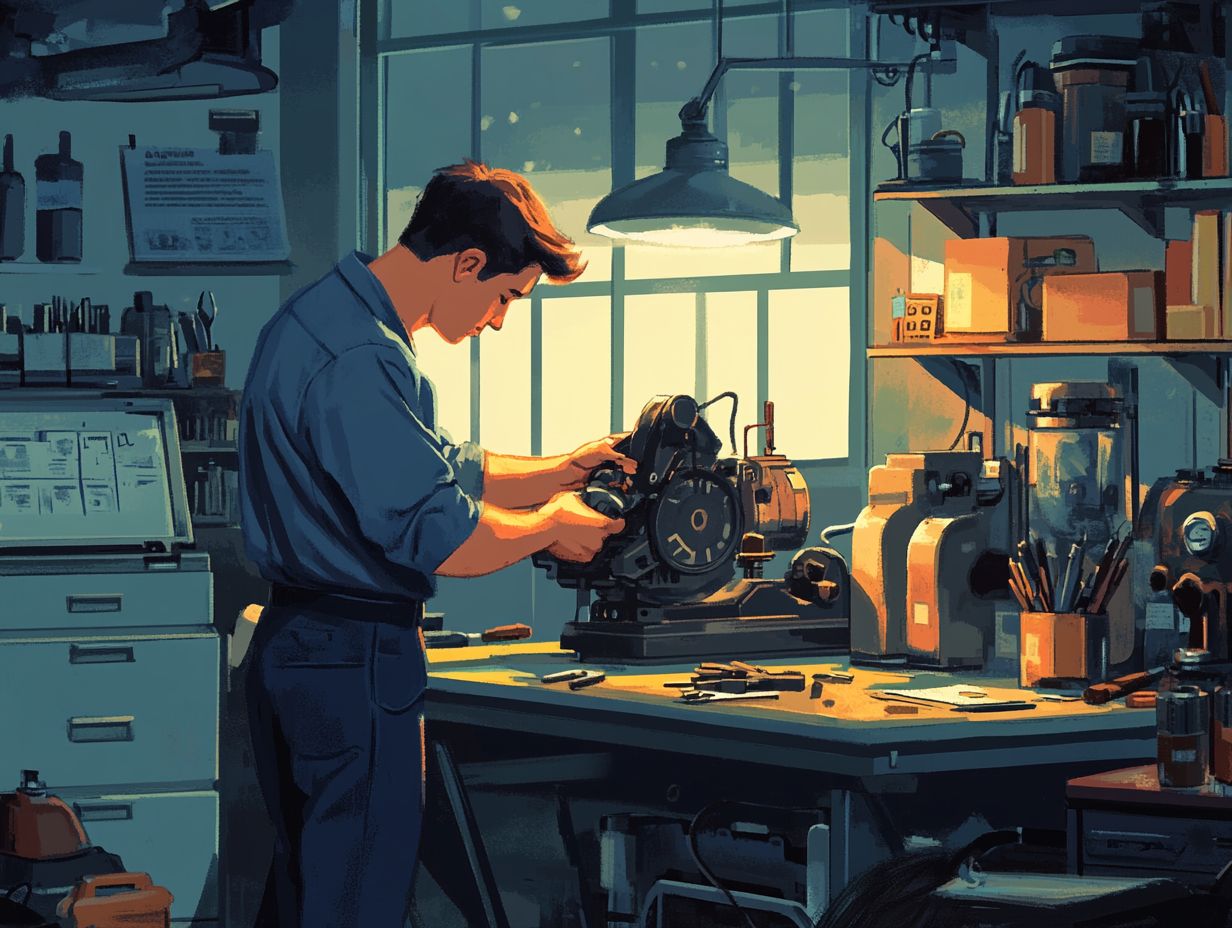
Proper storage of your equipment is essential for maintaining its integrity, safeguarding it against unnecessary wear and tear, and ensuring it remains in peak condition for use.
Storing machinery correctly not only extends its lifespan but also significantly impacts its performance and safety. Be sure to consider environmental factors like temperature, humidity, and exposure to the elements. Proper storage also involves using a comprehensive equipment inventory. Ideally, keep your equipment in climate-controlled spaces to reduce risks like rust and corrosion.
Utilizing protective covers and organizing your equipment securely can help prevent accidental damage. By adhering to best maintenance methods in storage, you enhance the health of your equipment and reduce upkeep costs over time. This leads to more efficient operations and minimized downtime.
8. Address Issues Promptly
Promptly addressing issues that arise with your equipment items is crucial for effective maintenance.
Any delays in repairs can lead to increased downtime and elevated maintenance costs.
Adopting a proactive approach to equipment management minimizes disruptions and extends the lifespan of your machinery.
Conducting regular inspections and utilizing diagnostic tools helps you identify minor problems before they escalate into significant failures.
Use an equipment tracking system to assist in these regular inspections.
Regarding handling maintenance requests, establish a clear communication channel for reporting issues.
Prioritize maintenance requests based on urgency and impact to ensure that the most critical matters are addressed first.
Integrate preventive maintenance strategies for routine check-ups and servicing, which effectively prevent many common problems from occurring in the first place.
Leverage maintenance software to streamline these processes and provide valuable maintenance insights.
Use data analytics to track equipment performance, allowing you to anticipate failures and strategize maintenance schedules more effectively.
What are the Benefits of Proper Equipment Maintenance?
Proper equipment maintenance offers incredible advantages, including extending the lifespan of your machinery, enhancing operational efficiency, minimizing downtime, and elevating workplace safety.
By managing your maintenance practices proactively, you can ensure that your equipment items operate at their best and meet all safety standards.
1. Increased Equipment Lifespan
One of the main benefits of proper equipment maintenance is the extended lifespan of your machinery.
By committing to regular maintenance practices, you ensure that your equipment items operate at peak performance over time.
This increase in longevity minimizes the need for costly replacements and enhances your overall operational efficiency.
Regular check-ups, which include tasks like lubricating moving parts, cleaning components, and replacing worn-out parts before they fail, are critical in this endeavor.
Consider the example of a manufacturing facility that adopted a comprehensive preventive maintenance plan and enjoyed a remarkable 30% reduction in equipment downtime over the course of a year.
Regular inspections help identify potential issues before they escalate, enabling timely interventions that save time and money.
Companies that prioritize these maintenance practices often benefit from case studies showcasing fewer emergency repairs and increased profitability, as their equipment items continue to run smoothly and efficiently.
2. Improved Efficiency
Improved efficiency is a significant benefit of proper equipment maintenance.
When machinery is well-maintained, it operates more smoothly and effectively, leading to enhanced productivity.
This is especially true in industries like manufacturing, where routine inspections and timely repairs can avert unexpected breakdowns that disrupt workflow.
For example, companies that adopt predictive maintenance strategies using technologies like IoT sensors (devices that connect to the internet to gather data) and machine learning often experience a substantial reduction in downtime and maintenance costs.
By consistently monitoring equipment conditions, you can schedule repairs during off-peak times, ensuring that operations flow seamlessly.
When employees work in a reliable operational environment, it cultivates a culture of productivity and boosts morale, ultimately resulting in higher output.
Diligent maintenance practices highlight their own importance and illustrate their direct impact on achieving long-term operational goals.
3. Reduced Downtime and Repair Costs
Reduced equipment downtime and lower repair costs are clear benefits of implementing effective maintenance strategies. These strategies enable you to minimize disruptions in your operations while simultaneously cutting down on repair expenses.
By embracing preventive maintenance methods, you can significantly boost your operational efficiency. Statistics reveal that organizations utilizing predictive maintenance (using data to predict equipment failures before they occur) can reduce equipment downtime by up to 30%. This reduction can lead to noteworthy savings in both lost productivity and unplanned repairs.
Maintaining a proper maintenance budget and having access to appropriate maintenance resources contribute to these savings. Consider the case of a prominent manufacturing company that adopted a data-driven maintenance approach; they achieved a remarkable 25% reduction in repair costs over three years. This strategic focus extends the lifespan of machinery and enhances overall profitability by minimizing unexpected interruptions that disrupt production schedules.
4. Enhanced Safety
Equipment Maintenance
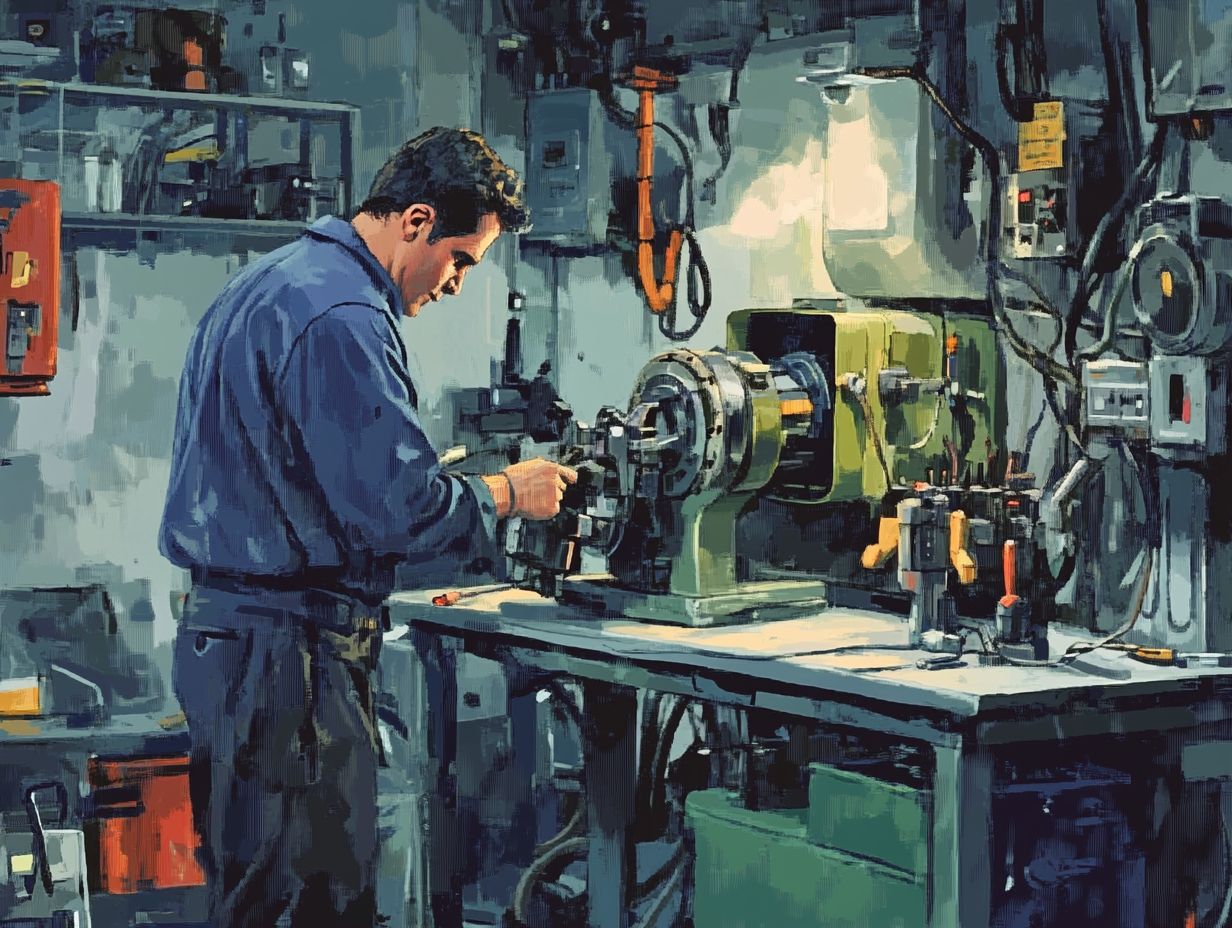
Enhanced safety is one of the most important benefits of diligent equipment maintenance. Well-maintained machinery significantly lowers the risk of accidents and injuries for both equipment operators and other personnel.
Regular inspections are essential for spotting potential hazards before they escalate into serious problems. For example, a routine check may uncover a minor oil leak that, if ignored, could lead to catastrophic failure during operation. This scenario emphasizes the importance of a robust maintenance strategy and preventive maintenance.
By adhering to established maintenance practices, you extend the lifespan of your machinery and ensure that every component operates at peak performance. For instance, scheduled calibration of safety devices is crucial; overlooking this step could mean your equipment fails to perform as intended, impacting performance and unnecessarily endangering your workers.
Ultimately, cultivating a culture of preventive maintenance greatly enhances workplace safety and boosts productivity. This creates an environment where everyone can thrive. Incorporating regular equipment inspections and employing a maintenance technician can ensure better equipment health and operational efficiency.
Frequently Asked Questions About Equipment Maintenance
What are the best maintenance practices for equipment maintenance?
The best practices for equipment maintenance include:
- Regularly scheduled maintenance
- Proper storage
- Following manufacturer’s guidelines
- Keeping detailed maintenance records
- Utilizing maintenance software to streamline processes
Why is a maintenance schedule important?
Regularly scheduled maintenance helps identify and address small issues before they become major problems. This approach prevents costly repairs and equipment downtime while supporting maintenance planning and preventive strategies.
How should equipment items be stored to ensure their longevity?
Equipment should be stored in a clean and dry environment, away from extreme temperatures and direct sunlight. It should also be properly covered or stored in a secure area to prevent damage, maintain compliance, and ensure optimal usage.
Why is it important to follow the manufacturer’s guidelines for equipment maintenance?
Following the manufacturer’s guidelines ensures that equipment is maintained correctly and helps maintain warranties or service agreements. This is crucial for proper maintenance processes.
What should be included in detailed repair records?
Detailed maintenance records should include:
- The date of maintenance
- The type of maintenance performed
- Any parts or supplies used
- Any issues or repairs that were identified
Incorporating these details into an equipment database can greatly aid in asset management and maintenance tracking.
Don’t wait until it’s too late! Act now to implement these maintenance strategies for better equipment health and safety.
How can regular equipment servicing and maintenance benefit a business?
Regular equipment maintenance boosts a business by extending equipment lifespan and cutting downtime. It also enhances efficiency and lowers costs related to repairs and replacements.
By managing regular maintenance, businesses can optimize their maintenance budget. This often leads to better equipment performance through insights gained from tracking key performance indicators (KPIs).






